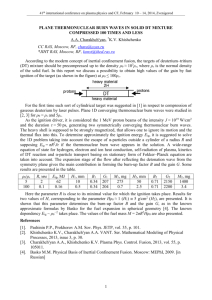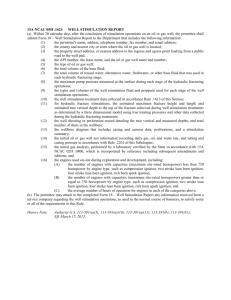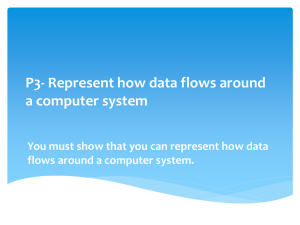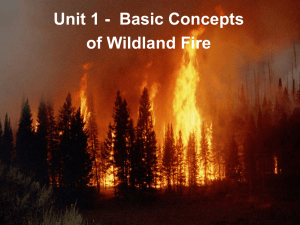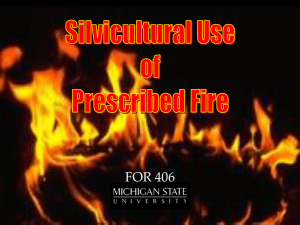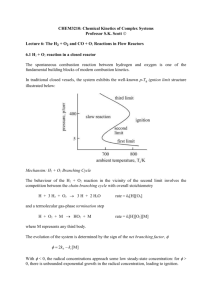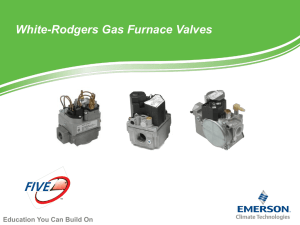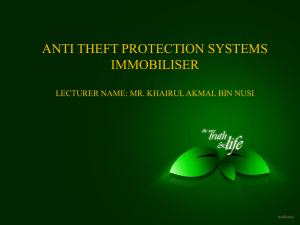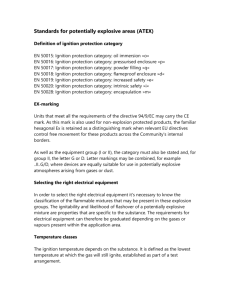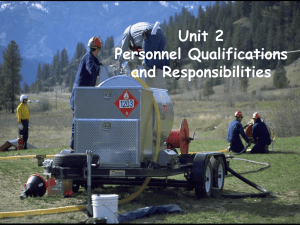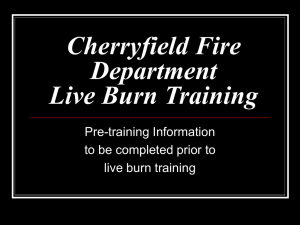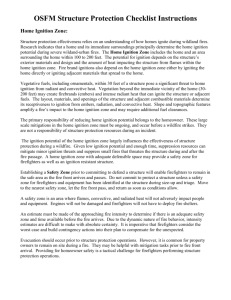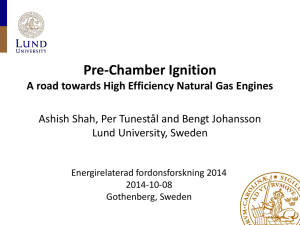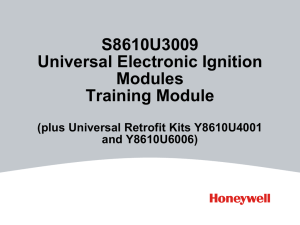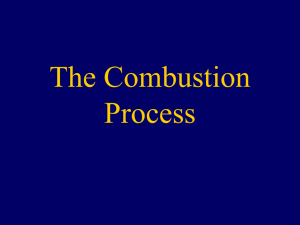Prescribed Fire - University of Florida
advertisement
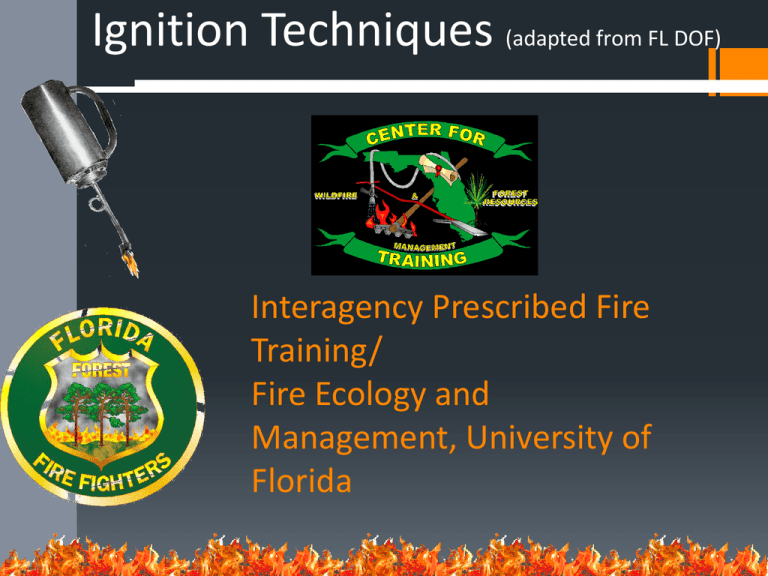
Ignition Techniques (adapted from FL DOF) Interagency Prescribed Fire Training/ Fire Ecology and Management, University of Florida Objectives Characterize basic fire types Link fire types to ignition patterns Identify safety concerns Describe when to use what Methods of pile/windrow burning Develop an ignition plan (you will do this later in your Burn Plan) Two situations requiring knowledge of ignition techniques Prescribed Fire: “Fire applied in a knowledgeable manner to forest fuels on a specific land area under selected weather conditions to accomplish predetermined, welldefined management objectives” Suppression burning is the use of prescribed fire in a wildland fire situation 2 types of suppression burning Counter Fire Burn-out Counter Fire Fire applied to stop the forward spread of uncontrolled fire GENERALLY NOT USED IN I.A. NEED AT LEAST 2 CREW MEMBERS ONLY IN CERTAIN FUEL TYPES ( not blowy leaf!) ONLY BY EXPERIENCED firefighters HIGH RISK TIME CRITICAL Burn-out: when? Often times on wildfires, control lines are established some distance from fire edge Pockets Inaccessible areas Pre-existing control lines Areas of lesser fuel concentrations OBJECTIVES Learn the Basic Fire Types- Related to Wind Characterize basic fire types 1. Backing 2. Head 3. Flanking Link fire types to ignition patterns Identify safety concerns Describe when to use what Methods of pile/windrow burning Develop an ignition plan (you will do this later in your Burn Plan) What are the FACTORS TO DETERMINE FIRING TECHNIQUES? OBJECTIVES WIND SPEED & DIRECTION SMOKE SENSITIVE AREAS IN CLOSE PROXIMITY? CREW EXPERIENCE/KNOWLEDGE 1. Backing Fire Used to establish baseline Generally safest Longer residence times Slowest R.O.S.’s (1-3 ch/hr) ROS determined by Fuel Moisture Excellent for heavy fuel loads Used to burn around values Generally not the primary technique Why not??? 1. Backing Fire 1. Backing Fire BURNS INTO THE WIND Backing, Flanking Fire- video 1. Backing Fire- wind is important 1. Backing Fire When backfire is the primary technique, consider: Windspeeds & fuel moistures Establishing additional baselines Orienting burn blocks WIND 2. Strip-Head Fire Most frequently used technique Fastest method Can manipulate intensity with strip width and time interval Consider: Width of strips Changing weather conditions Changing fuel conditions Using spots where necessary Spotting potential Convection activity “Closing the door” too soon 2. Strip-Head Fire STAY BEHIND DOWNWIND IGNITOR! 2. Strip-Head Fire • Intensity is controlled by line spacing and timing • Spread rate is sensitive to windspeed Fire- video 3. Flank Fire REMAIN IN SIGHT MAINTAIN PACE 3. Flank Fire Can be an excellent tool, burn large areas with less effort Uniform fire intensities Minimal spotting Good in diverse fuel types Consider: Winds (Dir. & Speed.)- must be steady! Number & experience of igniters- must be experienced! Communications & visibility (in unit) Conducive burn block orientation Using spot ignitions within the flanks Varying the flank ignition speed to control intensity 3. Flank Fire FIRE BURNS 90° TO WIND FLANK FIRE WALK INTO WIND WIND 3. Flank Firepace of ignition affects fire behavior 4. Point Source (Spot) Fire 4. Point Source (Spot) Fire Excellent for large areas (aerial ignition) Best technique for controlling intensities in various weather conditions Can be used in conjunction with strip head & flank technique Effective in heavy fuels Burn manager can control where convection occurs Quickest way to complete ignition Point Source (Spot) Fire When spot firing, burn managers should consid how to change fire intensity: Width between spots Width between strips Changes in weather & fuels Location of spots Spotting potential Difficulty in maintaining grid Grid orientation to wind Fast burn, high convection (why?) Point Source (Spot) Fire, initiation Point Source (Spot) Fire- growth 5. Ring Fire 5. Ring Fire Traditionally used for site-prep Minimizes short range spotting Quick & easy Early “point-of-no-return” Traps wildlife, high intensity High convective heat transfer When using ring ignition, consider: Access Objectives (overstory, smoke plume, speed) Where to start Crew experience Begin with center point ignition 5. Ring Fire How it’s really done: USE A VARIETY OF TECHNIQUES OVER A RANGE OF WEATHER CONDITIONS FOR MOSAIC BURN PATTERNS SECUREING A BASE LINE… LINE WIDTH? >2X FLAME LENGTH DO NOT “CLOSE THE DOOR”! CAN CAUSE FIRE WHIRLS (VORTICES) USE CAUTION WALKING DOWNWIND! USE CAUTION IN HEAVY FUELS USE CAUTION ON SLOPES USE CAUTION WHEN FIRES CONVERGE ALWAYS WATCH WHAT YOUR FIRE IS DOING FIRE GENERATED WINDS KNOW LOCATIONS OF PERSONNEL & EQUIPMENT Ignition steps 1. Evaluate conditions, resources, and objectives to determine desired fire behavior. 2. Test burn and evaluation 3. Black line 4. Ignition techniques 5. Contingency plans SAFETY should always be on your mind L.C.E.S. LOOKOUTS COMMUNICATIONS ESCAPE ROUTES SAFETY ZONES

